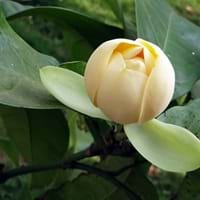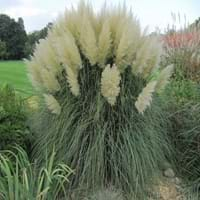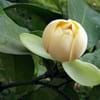Life Span
Perennial
Perennial
Origin
Cambodia, China, India, Indonesia, Papua New Guinea, Philippines, Singapore, Thailand, Viet Nam
Mediterranean, Northern Africa
Types
Magnolia angatensis, Magnolia beccarii, Magnolia championii
Not Available
Habitat
Wide range of ecological site
marshes, Riverbanks
USDA Hardiness Zone
10-15
6-9
AHS Heat Zone
Not Available
9 - 6
Sunset Zone
Not Available
Not Available
Habit
Oval or Rounded
Upright/Erect
Flower Color
Gold, White, Yellow
Purple, Silver
Flower Color Modifier
Bicolor
Bicolor
Leaf Color in Spring
Green
White, Gray Green
Leaf Color in Summer
Green
Light Green
Leaf Color in Fall
Green, Yellow green
Purple, Tan
Leaf Color in Winter
Gray Green
Purple, Tan
Leaf Shape
Ovate
Grass like
Plant Season
Spring, Summer
Summer, Fall, Winter
Sunlight
Full Sun, Partial Sun
Full Sun
Growth Rate
Medium
Medium
Type of Soil
Clay, Loam
Loam
The pH of Soil
Acidic, Neutral
Acidic, Neutral
Soil Drainage
Well drained
Well drained
Bloom Time
Spring, Late Spring
Late Summer, Fall
Tolerances
Not Available
Drought
Where to Plant?
Ground
Ground
How to Plant?
Seedlings, Transplanting
Seedlings, Vegetative
Plant Maintenance
Medium
Medium
Watering Requirements
Prefer drip-irrigation instead of Over-head watering
Water once every two or three weeks
In Summer
Lots of watering
Lots of watering
In Spring
Moderate
Moderate
In Winter
Average Water
Average Water
Soil pH
Acidic, Neutral
Acidic, Neutral
Soil Type
Clay, Loam, Sand
Loam
Soil Drainage Capacity
Well drained
Well drained
Sun Exposure
Full Sun, Partial Sun
Full Sun
Pruning
Prune if you want to improve plant shape
Cut back all stems to the same height
Fertilizers
Fertilize in late fall, fertilize in spring, Requires high amount of nitrogen
0-10-10 NPK fertilizer
Pests and Diseases
Aphids, Bacterial Blight, Canker, Crown gall, Hoplia beetle, Leaf burn, Leaf spot, Mealybugs, Powdery mildew, Red blotch, Scorch, Soft scales, Thripes, Wetwood
Drought, Edema
Plant Tolerance
Not Available
Drought
Flower Petal Number
Single
Single
Foliage Texture
Coarse
Fine
Foliage Sheen
Matte
Matte
Attracts
Not Available
Birds
Allergy
Not Available
Noxious Weed
Aesthetic Uses
Showy Purposes
Borders, Showy Purposes
Beauty Benefits
Treatment of Dark Spots
Not Available
Environmental Uses
Air purification
Erosion control
Medicinal Uses
Alzheimer’s Disease, Anxiety, Cancer, Digestion problems, Liver problems, Menstrual Cramps, Respiratory Disorders, Weight loss
Not Available
Part of Plant Used
Whole plant
Leaves
Other Uses
Used as Ornamental plant, Used for its medicinal properties
Cultivated for fodder
Used As Indoor Plant
Yes
No
Used As Outdoor Plant
Yes
Yes
Garden Design
Feature Plant, Foundation, Shade Trees
Cutflower, Dried Flower/Everlasting, Feature Plant, Mixed Border
Botanical Name
Magnolia liliifera
SACCHARUM ravennae
Common Name
Egg magnolia
Hardy Pampas Grass, Plume Grass, Ravennagrass
In Hindi
Magnolia liliifera
Plume Grass
In German
Magnolia Liliifera
Plume Gras
In French
Magnolia Liliifera
Plume Herbe
In Spanish
Magnolia Liliifera
Penacho de hierba
In Greek
Magnolia Liliifera
Plume Grass
In Portuguese
Magnolia Liliifera
Plume grama
In Polish
Magnolia Liliifera
Pióropusz Trawa
In Latin
Magnolia Liliifera
Kessinger Grass
Phylum
Tracheophyta
Magnoliophyta
Class
Magnoliopsida
Lilopsida
Order
Magnoliales
Cyperales
Family
Magnoliaceae
Poaceae
Clade
Angiosperms, Magnoliids
Angiosperms, Commelinids, Monocots
Tribe
Not Available
Andropogoneae
Subfamily
Not Available
Panicoideae
Number of Species
Not Available
Not Available
Difference Between Magnolia Liliifera and Plume Grass
If you are confused whether Magnolia Liliifera or Plume Grass are same, here are some features about those plants to help you choose better. Many people think that these two plants have the same characteristics, but one can see Magnolia Liliifera and Plume Grass Information and learn more about it. Fertilizers required for proper growth of Magnolia Liliifera are Fertilize in late fall, fertilize in spring and Requires high amount of nitrogen, whereas for Plume Grass fertilizers required are 0-10-10 NPK fertilizer. Hence, one should know the basic difference between Magnolia Liliifera and Plume Grass if you are planning to have them in your garden to enhance its beauty.
<
Flowering PlantsImportance of Magnolia Liliifera and Plume Grass
Want to have the most appropriate plant for your garden? You might want to know the importance of Magnolia Liliifera and Plume Grass. Basically, these two plants vary in many aspects. Compare Magnolia Liliifera and Plume Grass as they differ in many characteristics such as their life, care, benefits, facts, etc. Every gardener must at least have the slightest clue about the plants he wants to plant in his garden. Compare their benefits, which differ in many ways like facts and uses. The medicinal use of Magnolia Liliifera is Alzheimer’s Disease, Anxiety, Cancer, Digestion problems, Liver problems, Menstrual Cramps, Respiratory Disorders and Weight loss whereas of Plume Grass is Not Available. Magnolia Liliifera has beauty benefits as follows: Treatment of Dark Spots while Plume Grass has beauty benefits as follows: Treatment of Dark Spots.
Compare Facts of Magnolia Liliifera vs Plume Grass
How to choose the best garden plant for your garden depending upon its facts? Here garden plant comparison will help you to solve this query. Compare the facts of Magnolia Liliifera vs Plume Grass and know which one to choose. As garden plants have benefits and other uses, allergy is also a major drawback of plants for some people. Allergic reactions of Magnolia Liliifera are Not Available whereas of Plume Grass have Noxious Weed respectively. Having a fruit bearing plant in your garden can be a plus point of your garden. Magnolia Liliifera has no showy fruits and Plume Grass has showy fruits. Also Magnolia Liliifera is not flowering and Plume Grass is not flowering . You can compare Magnolia Liliifera and Plume Grass facts and facts of other plants too.





